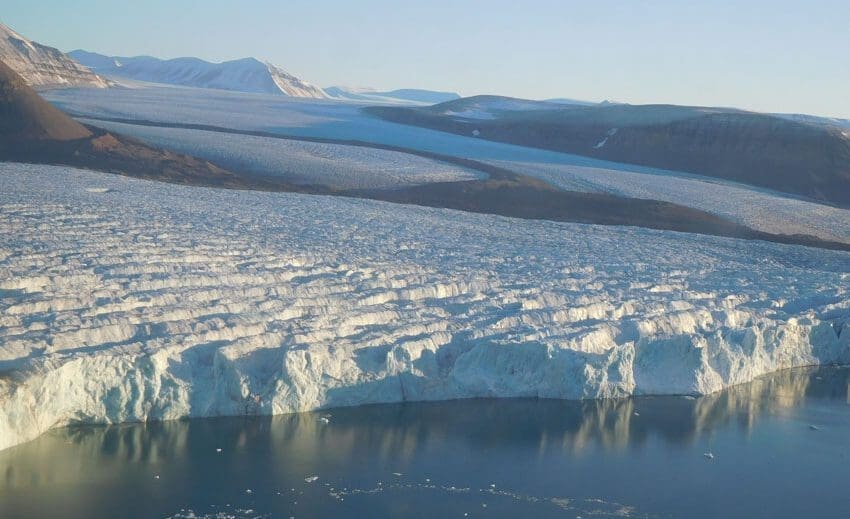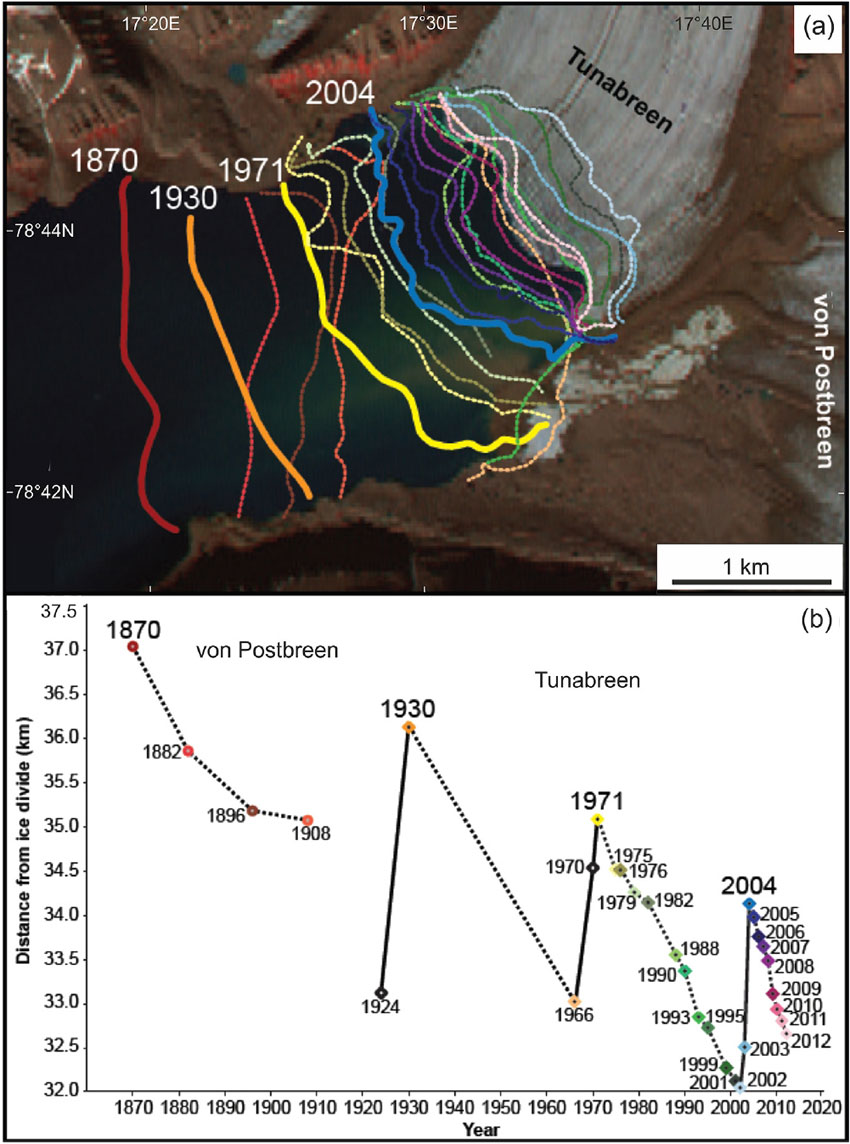Tunabreen may be surging decades earlier than expected

Tunabreen in October 2015. Photo: Doug Benn/UNIS.
Top image: Tunabreen in early October 2015. Photo: Doug Benn/UNIS.
Tunabreen, the iconic glacier in Tempelfjorden, is well-known to residents of Svalbard and the throngs of tourists that visit each year. The last known surge of Tunabreen was in 2004 and scientists have believed that the glacier has a 35–40 year surge interval, suggesting a new surge around year 2040. However, new satellite imagery suggests that Tunabreen is starting to surge now, decades earlier than expected.
15 February 2017
Text: Chris Borstad, Associate Professor in snow and ice physics/UNIS
Located at the head of Tempelfjorden, Tunabreen is a surge-type glacier that periodically transitions from slow, stable flow to extremely rapid flow that chaotically fractures the glacier surface as the ice marches forward.
Tunabreen is known to have surged three times in the past, around 1930, 1971, and 2004 (see below). This has suggested a regular 35–40 year surge interval, thus Tunabreen was not expected to surge again until around 2040 at the earliest.

Tunabreen has been monitored as part of the Calving Rates and Impact on Sea Level (CRIOS) project since 2013. As part of this project, and with additional support from UNIS, Adrian Luckman of Swansea University and UNIS has been calculating regular velocity maps of Tunabreen using TerraSAR-X satellite data. In recent years, the glacier has been slowly retreating up the fjord, with a seasonal cycle of increased speeds and iceberg calving in the summer (linked to the fjord temperature) followed by slowdown during the winter.
In recent months, however, Tunabreen started to behave abnormally. At a time when most of the glacier would be stagnant, as it was in winter 2015 (Figure 2, left), in winter 2016 the glacier sped up dramatically (Figure 2, right). Although the cause of this surprising activity remains uncertain, the timing coincides with a period of record high temperatures and precipitation in October and November.

As a result of this rapid increase in speed, the glacier surface will be covered in many new and deep crevasses, making travel over the glacier hazardous. Additionally, if the high speeds continue there are likely to be many more icebergs in Tempelfjorden than in recent years. This could impact the formation and conditions of sea ice in the fjord.
Tunabreen will continue to be monitored over the course of the winter by glaciologists at UNIS.
Time series of Sentinel satellite images of Tunabreen from January 2015 through January 2017. Note the appearance of large new crevasses far upglacier during winter 2016/2017: